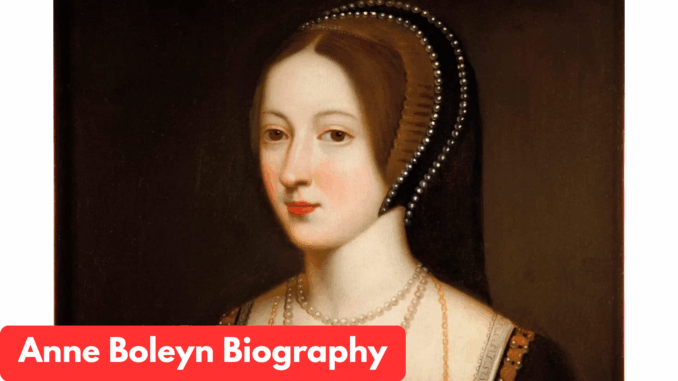
Anne Boleyn is one of the most captivating and tragic figures in English history. As the second wife of King Henry VIII and the mother of Queen Elizabeth I, her life was marked by ambition, romance, and political intrigue.
Her dramatic rise to power, shocking downfall, and eventual execution on charges of treason, adultery, and incest have made her one of the most studied women in history.
Early Life and Background
Anne Boleyn was born around 1501, though historians debate the exact year, at Blickling Hall in Norfolk, England. She was the daughter of Thomas Boleyn, a respected diplomat, and Lady Elizabeth Howard, a noblewoman from one of England’s most prominent families. Anne spent part of her childhood in the Netherlands and France, where she was educated in courtly manners, languages, music, and religion.
Her time in France particularly influenced her charm, sophistication, and wit, qualities that would later captivate King Henry VIII.
Rise at Court
Anne returned to England around 1522 and soon became a lady-in-waiting to Queen Catherine of Aragon, Henry VIII’s first wife. With her intelligence, charisma, and elegance, Anne quickly drew attention at court. Unlike many women of the time, she resisted Henry’s initial advances, refusing to become just another mistress. Instead, she demanded marriage.
This insistence set the stage for a religious and political revolution, as Henry VIII sought to annul his marriage to Catherine and marry Anne.
Marriage to Henry VIII
After years of courtship and political battles with the Pope, Henry broke with the Roman Catholic Church and established the Church of England. In 1533, Henry secretly married Anne Boleyn, who was already pregnant. She was crowned Queen of England later that year.
In September 1533, Anne gave birth to a daughter, Elizabeth, who would later become Queen Elizabeth I, one of the most powerful monarchs in English history. However, Anne’s failure to produce a male heir strained her marriage with Henry.
Downfall and Execution
Anne’s position became precarious as Henry grew frustrated with her inability to provide a son. By 1536, political enemies at court, combined with Henry’s new interest in Jane Seymour, sealed her fate.
Anne was arrested and charged with adultery, incest, and high treason—charges widely regarded as false and politically motivated. On May 19, 1536, she was executed at the Tower of London by a French swordsman, a rare gesture of mercy.
Legacy
Despite her tragic end, Anne Boleyn left an indelible mark on history. Her daughter, Elizabeth I, became one of England’s greatest monarchs, presiding over the Elizabethan Golden Age. Anne’s life also played a crucial role in the English Reformation, which permanently altered the religious and political landscape of England.
FAQs
When was Anne Boleyn born?
Anne Boleyn was born around 1501, though the exact year is uncertain.
Why was Anne Boleyn executed?
She was executed in 1536 on charges of adultery, incest, and treason—charges considered fabricated to remove her from power.
Who were Anne Boleyn’s parents?
Her parents were Thomas Boleyn, a diplomat, and Lady Elizabeth Howard.
Did Anne Boleyn have any children?
Yes, she had one surviving child, Elizabeth I, who later became Queen of England.
What was Anne Boleyn’s legacy?
Her legacy lives on through her daughter Elizabeth I and her role in the English Reformation.
Conclusion
Anne Boleyn’s biography is a story of ambition, love, betrayal, and legacy. Her marriage to Henry VIII altered the course of English history, leading to the establishment of the Church of England. Though her life ended in tragedy, her daughter Elizabeth I ensured that Anne’s influence endured for centuries. Today, Anne Boleyn remains a symbol of resilience, intrigue, and the power of legacy.
Leave a Reply